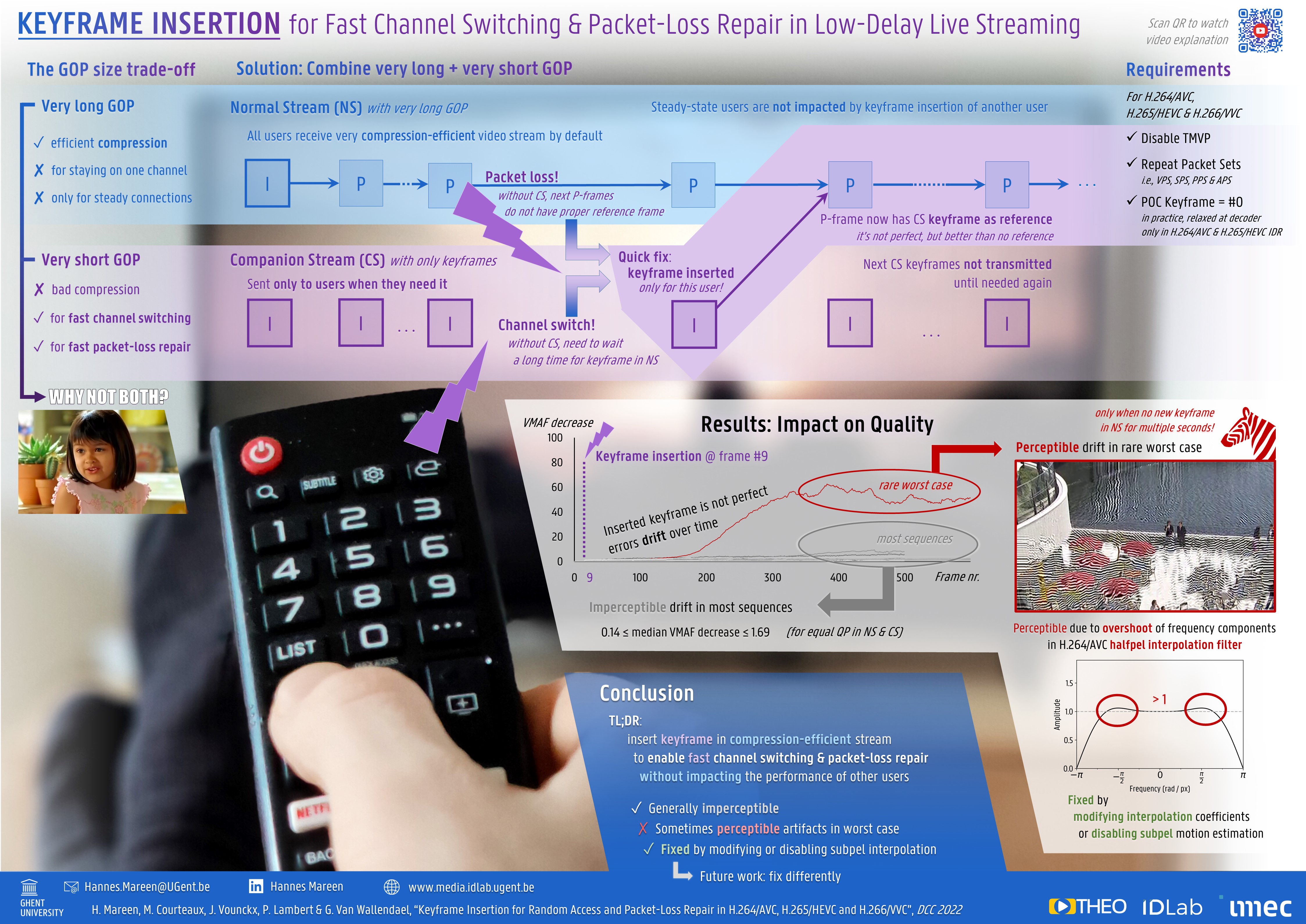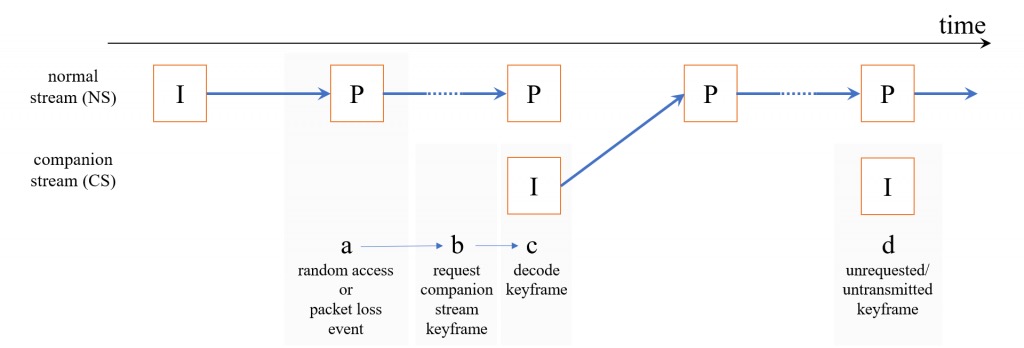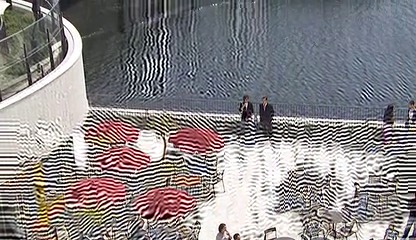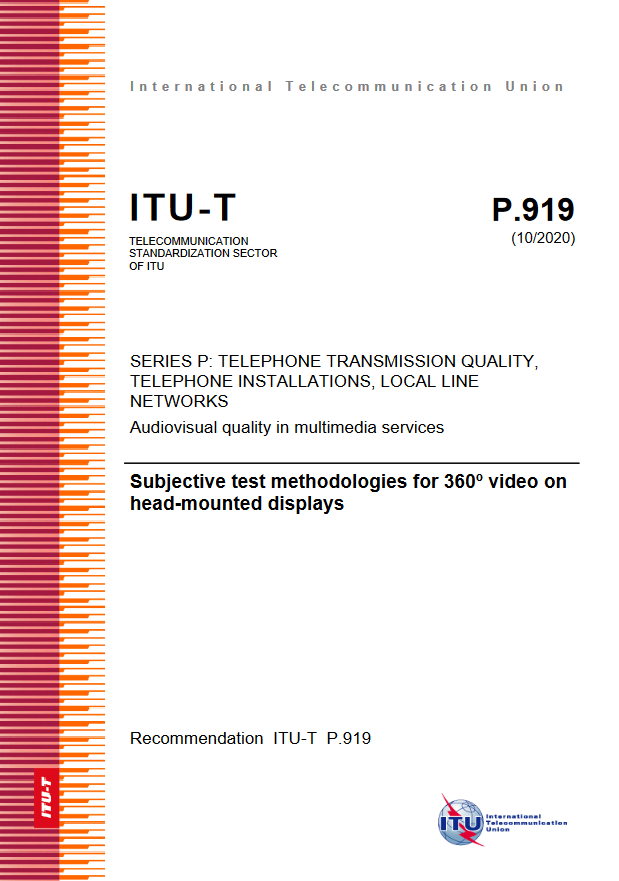We are happy to announce that our paper titled “Keyframe Insertion for Random Access and Packet-Loss Repair in H.264/AVC, H.265/HEVC, and H.266/VVC” was accepted for presentation as a poster at the Data Compression Conference (DCC) 2022. Later, an extended paper titled “A study on keyframe injection in three generations of video coding standards for fast channel switching and packet-loss repair” was accepted at Multimedia Tools and Applications. This work was made in collaboration with THEO Technologies.
Hannes Mareen presented this research on March 24, 2022, in Snowbird, Utah, USA. The poster can be viewed on IEEE SigPort, and a presentation of it can be watched below (or by clicking here). Note that this poster presentation is targeted towards video coding experts.
 The poster presented at DCC 2022. Full resolution and more information can be found here.
The poster presented at DCC 2022. Full resolution and more information can be found here.
Sending low-delay live video over error-prone channels comes with packet-loss-repair and random-access challenges. For example, users want to be able to quickly switch channels on TV. Most existing solutions have a negative impact on end-users with reliable connections or users that do not switch channels.
To minimize this impact, the keyframe-insertion technique extends a compression-efficient video stream with a companion stream solely consisting of keyframes.
 Only after a (a) random-access or packet-loss event, (b) a companion stream keyframe is requested and (c) it replaces the collocated predicted frame. Note that (d) succeeding unrequested keyframes remain untransmitted.
Only after a (a) random-access or packet-loss event, (b) a companion stream keyframe is requested and (c) it replaces the collocated predicted frame. Note that (d) succeeding unrequested keyframes remain untransmitted.
This work describes the limitations and requirements to enable keyframe insertion in three generations of video coding standards (H.264/AVC, H.265/HEVC, and H.266/VVC).
The results show that the general negative quality impact is low for all evaluated codecs. However, for rare outliers, drift-error artifacts can become perceptible over time. We found that this worst-case artifact type in H.264/AVC is caused by halfpel interpolation, and can be avoided by modifying or disabling subpel motion estimation.
 Zebra-pattern artifacts observed in the outlier sequence BQSquare. Note that this extreme quantity of perceptible drift-error artifacts does not occur in other tested sequences.
Zebra-pattern artifacts observed in the outlier sequence BQSquare. Note that this extreme quantity of perceptible drift-error artifacts does not occur in other tested sequences.
In conclusion, this paper discusses the viability of keyframe insertion in multiple compression standards to improve low-latency video distribution.
The results presented and used for this study are available for download here. That is, the aggregated result files (.xlsx) containing the VMAF / PSNR / SSIM / frame size information are given for all five investigated codecs, as well as the modified x264 codec (with modified halfpel interpolation filter coefficients) and the ultrafast configuration of the x264 codec (with subpel ME disabled). Additionally, the high-resolution figures shown in the paper are available for download as well.
Paper: Keyframe Insertion for Random Access and Packet-Loss Repair in H.264/AVC, H.265/HEVC, and H.266/VVC Extended paper: A study on keyframe injection in three generations of video coding standards for fast channel switching and packet-loss repair









